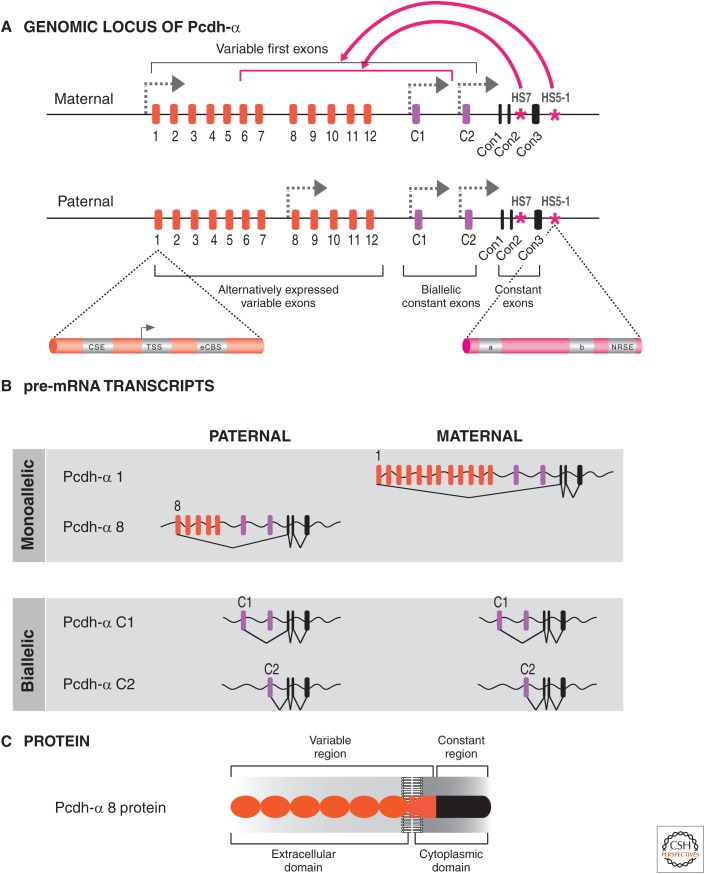Figure 4.
Alternative splicing produces variable Pcdh isoforms. (A) Hypothetical example showing the expression pattern of the Pcdh-α cluster in a single neuron, in which one of the alternative promoters is activated in a seemingly stochastic fashion on each chromosome. An enlargement of the exon 1 promoter region shows the two CCCTC-binding factor (CTCF) binding sites (conserved sequence element [CSE] and exonic CTCF binding site [eCBS]). The enlargement of the HS5-1 enhancer shows the two CTCF binding sites (a and b) and the neuron-restrictive silencer factor (NRSF) binding sequence, neuron-restrictive silencer element (NRSE). (B) The pre-mRNAs produced the maternal and paternal alleles, showing monoallelic expression of variable exons α1 and α8, but biallelic expression of the C-type exons. The variable pre-mRNAs contain all the variable exons located downstream from the selected promoter, which are subsequently spliced to the Con1–3 exons. Only the exon located immediately downstream from the selected promoter will be spliced to the exons encoding the intracellular constant region. (C) Each variable exon encodes for six ecto- (cadherin) domains involved in self-recognition, most probably through homotypic repulsion.

